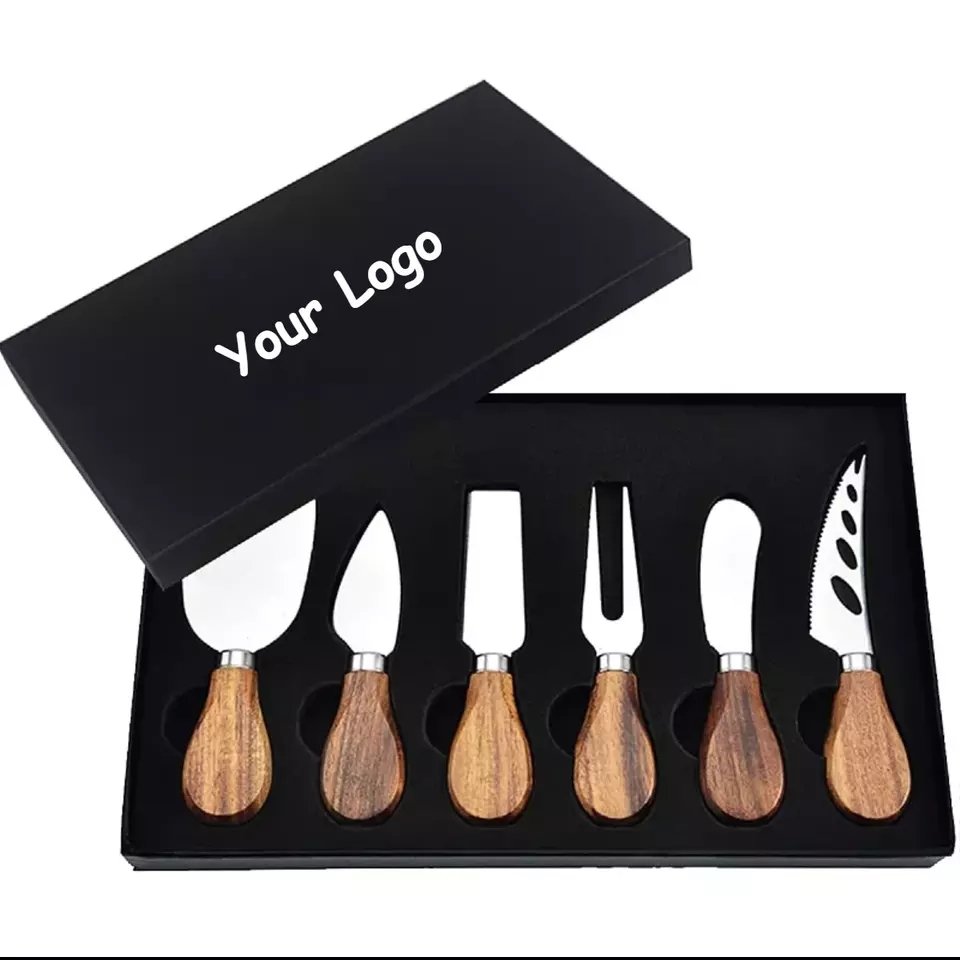Running a wholesale outdoor cutlery business means tight margins and fierce competition. Are you struggling to keep profits healthy?
To boost your profit margins in outdoor cutlery wholesale, you need smart strategies on sourcing, pricing, marketing, and cost control. This guide shares six proven tips to help you earn more without losing customers.
Profit margin improvement is key to long-term success. Keep reading to discover practical methods you can start applying today.
Table of Contents
How can better supplier relationships increase profit margins?
Finding reliable suppliers at the right price can be hard. Poor relationships often lead to higher costs and inconsistent quality.
Strong supplier partnerships help you get better prices, timely deliveries, and priority support. This reduces your costs and avoids delays that hurt profits.
Why Supplier Relationships Matter
Good suppliers are more flexible and responsive. They may offer discounts or customized products that fit your customers’ needs better.
Balancing Cost and Quality
Cheaper materials may lower upfront costs but can damage your brand if quality suffers. Strong ties allow negotiation on price without sacrificing quality.
| Benefit | Explanation | Impact on Profit |
|---|---|---|
| Price Discounts | Regular orders or bulk buys unlock better rates | Lower cost per unit |
| Priority Production | Faster turnaround reduces inventory holding | Faster cash flow, less storage cost |
| Customization | Tailored products improve sales appeal | Higher prices and customer loyalty |

Challenges and Solutions
Sometimes suppliers resist discounts or customization. Build trust by showing order consistency and paying on time. Visit factories when possible to strengthen bonds.
Supplier relationships are not just transactions. They are partnerships that, when nurtured, bring long-term profit gains.
What pricing strategies maximize profit without losing customers?
Setting the right price is tricky. Too high, and customers leave; too low, and profits vanish.
Using value-based pricing ensures your prices reflect product benefits and market demand. Discounts should reward loyal customers without eroding margins.
Cost-Plus vs Value-Based Pricing
Cost-plus sets price by adding markup on costs. It is simple but ignores customer willingness to pay.
Value-based pricing considers what customers think the product is worth. Outdoor cutlery with durability and unique design can command higher prices.
| Pricing Model | Pros | Cons |
|---|---|---|
| Cost-Plus | Easy to calculate | May miss higher profits |
| Value-Based | Maximizes profit from customer demand | Requires market knowledge |
| Competitive Pricing | Matches rivals’ prices | Risk of price wars |
Discount Tactics
Offer early-bird deals or volume discounts for bulk buyers. Avoid across-the-board cuts that lower brand value.
Psychological Pricing
Prices ending in .99 or .95 can increase sales volume. Bundle sets to boost average order size.
Proper pricing requires market insight and testing different approaches to find what fits your brand and customers.
How can inventory management improve profit margins?
Holding too much inventory ties up cash and increases storage costs. Too little stock risks missed sales.
Efficient inventory management balances supply and demand. It reduces waste, cuts storage fees, and improves cash flow.
Just-In-Time (JIT) Inventory
JIT reduces excess stock by receiving goods only as needed. This cuts storage costs but needs strong supplier reliability.
Safety Stock and Forecasting
Keep minimal safety stock based on sales data to avoid stockouts. Use historical data and trends to forecast demand.
| Inventory Strategy | Benefits | Risks |
|---|---|---|
| Just-In-Time | Lower holding costs | Supplier delays can halt sales |
| Safety Stock | Avoids out-of-stock situations | Increased storage expense |
| Demand Forecasting | Matches inventory to sales | Inaccurate forecasts lead to loss |
Technology Use
Inventory software tracks sales and stock in real-time. It alerts you to reorder points and helps plan promotions.
Proper inventory management frees up working capital and boosts profit margins by reducing unnecessary expenses.
Why is product differentiation crucial in outdoor cutlery wholesale?
Outdoor cutlery is a crowded market. Without something unique, your products blend in, forcing price competition.
Differentiation through design, materials, or packaging creates perceived value. Customers pay more for items that stand out or meet specific needs.
Design Innovation
Unique shapes, ergonomic handles, or multi-function tools attract niche customers.
Material Quality
Using rust-resistant steel or eco-friendly materials adds appeal.
| Differentiation Type | Example | Profit Impact |
|---|---|---|
| Design | Foldable camping knives | Higher price, loyal customers |
| Materials | Food-grade stainless steel | Justifies premium pricing |
| Packaging | Reusable travel cases | Increases perceived value |
Marketing Differentiation

Highlight your cutlery’s story or benefits through branding. Use social proof and certifications.
Differentiation requires upfront effort but leads to sustainable profits by reducing pure price competition.
How can digital marketing increase sales and profits in cutlery wholesale?
Without effective marketing, even great products struggle to reach buyers. Many wholesalers overlook online channels.
Digital marketing expands your reach cost-effectively. SEO, social media, and targeted ads bring qualified leads who convert better.
SEO and Content Marketing
Create blogs, videos, and guides about outdoor cutlery. Good content attracts search traffic and builds trust.
Social Media Engagement
Platforms like Instagram and Facebook showcase product use and customer stories.
| Marketing Channel | Cost Efficiency | Sales Impact |
|---|---|---|
| SEO | High (long-term) | Generates organic traffic |
| Social Media | Moderate | Builds brand and engagement |
| Paid Ads | Variable | Fast lead generation |
Email Campaigns
Nurture leads with newsletters and promotions. Personalize offers based on customer behavior.
Digital marketing requires testing and patience but delivers measurable ROI that grows profits.
What operational efficiencies help increase profit margins?
Operational waste drains profits silently. Inefficient order processing, poor communication, or slow delivery raise costs.
Streamlining operations cuts expenses, speeds delivery, and improves customer satisfaction, all lifting profit margins.
Process Automation
Use software for order management, invoicing, and inventory tracking to reduce errors and save time.
Staff Training
Well-trained teams work faster and make fewer mistakes.
| Efficiency Area | Improvement Example | Profit Effect |
|---|---|---|
| Order Processing | Automated order confirmations | Faster fulfillment, fewer errors |
| Logistics | Route optimization | Lower shipping costs |
| Customer Service | Chatbots for quick responses | Better retention |
Continuous Improvement
Regularly review workflows to spot bottlenecks and inefficiencies. Involve staff in improvement ideas.
Operational excellence directly supports higher profit margins by cutting hidden costs.
What raises a profit margin higher?
Many factors influence how high your profit margin can go. Simply raising prices is not enough; you need to balance cost control, product value, and operational efficiency.
Higher profit margins come from reducing costs without hurting quality, offering unique products that justify premium prices, and improving sales volume through marketing and distribution.
Cost Reduction
Lowering material, labor, and overhead costs directly increases the margin on each sale. Smart sourcing and automation help here.
Product Value
Products perceived as higher quality or unique allow you to charge more. Design, branding, and customer service add value.
| Efficiency Area | Improvement Example | Profit Effect |
|---|---|---|
| Order Processing | Automated order confirmations | Faster fulfillment, fewer errors |
| Logistics | Route optimization | Lower shipping costs |
| Customer Service | Chatbots for quick responses | Better retention |
Operational Efficiency
Faster order fulfillment and fewer returns reduce costs and improve customer satisfaction.
In reality, a combination of these factors raises profit margins sustainably.
What is a good profit margin for wholesale?
Wholesale profit margins vary widely by industry. For outdoor cutlery, margins between 15% to 30% are typical.
Margins below 15% risk unsustainable business due to fixed costs. Margins above 30% suggest strong brand power or highly efficient operations.
Industry Benchmarks
Outdoor and kitchenware wholesalers usually operate in moderate margin ranges.
| Business Type | Typical Profit Margin Range |
|---|---|
| Commodity Wholesale | 5% – 15% |
| Outdoor Cutlery Wholesale | 15% – 30% |
| Branded Retail | 30% – 50% |
Factors Affecting Margins
Volume discounts, market competition, and cost structure influence what is a good margin.
Balancing Margin and Volume
High margins with low sales or low margins with high volume can both work but carry different risks.
Aiming for steady margins around 20% is a healthy target for most wholesalers.
How can profit margin be increased?
Increasing profit margins requires action on several fronts: cutting costs, raising prices strategically, improving sales mix, and boosting efficiency.
Simply raising prices may lose customers. Cutting costs without harming quality is delicate. Improving product mix and operations offers balanced growth.
Cost Management
Negotiate better supplier contracts, optimize inventory to reduce waste, and automate routine tasks.
Pricing Strategy
Use data to identify which products customers value most and price them accordingly.
| Strategy | Action Steps | Expected Result |
|---|---|---|
| Cost Reduction | Bulk buying, supplier negotiation | Lower unit costs |
| Pricing Optimization | Segment customers, value pricing | Higher revenue per sale |
| Product Mix | Focus on high-margin items | Better overall margin |
| Operational Efficiency | Streamline order processing | Reduced overhead costs |
Customer Focus
Build loyalty through quality and service. Repeat customers reduce marketing costs and increase margin.
Improving profit margin is a continuous process requiring monitoring and adjustment.





